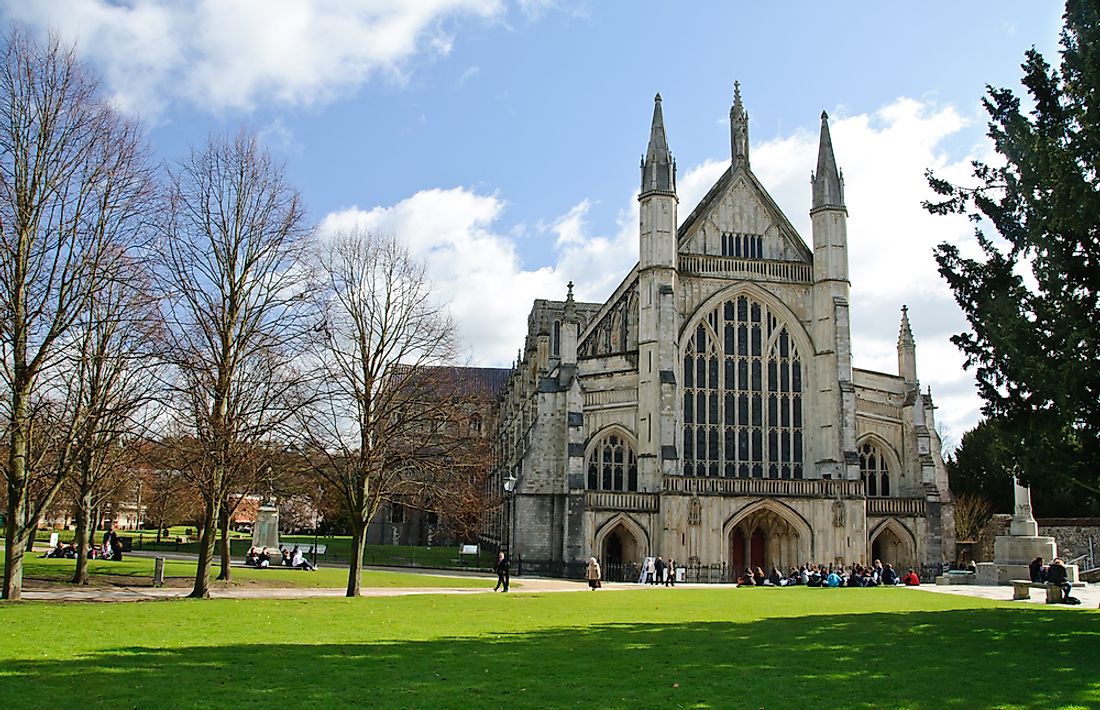Winchester Cathedral - Notable Cathedrals

Situated in Winchester, the Winchester Cathedral is one of the most significant churches in Europe. The minster has the longest nave in Europe, and it played a vital role in the history of United Kingdom during the Middle Ages. In fact, the cathedral's structure is a crucial building in the United Kingdom. Before the Reformation, the church was dedicated to numerous individuals including St Paul, St Swithun, and St Peter among others. The current minster was established around 642 while the older one was converted into a monastic settlement in 971.
History
In 1079, Bishop Walkelin started constructing the Winchester Minster. After the construction was completed, it was consecrated in the presence of some of the United Kingdom abbots and bishops. During the S. Swithun celebration, all the monks moved to the new minster with jubilation and glory. Currently, a substantial amount of the structure including the nave transept and crypt exist, but the original crossing tower collapsed around 1107.
After his accession in 1189, Godfrey de Lucy added the retro-choir. Another primary reconstructing phase took place during the mid-14th century under bishops Wykeham and Edington. Edington got rid of the west nave bays and installed the west front before remodelling the nave. Wykeham remodeled and re-cased the Caen in the perpendicular gothic style. Wykeham also replaced the old wooden ceiling with the current stone vaults.
Henry of Beaufort continued the nave remodeling work initiated by Edington while adding a chantry to the southern part of the retro-choir. William of Waynflete built the northern chantry from 1447 to 1486. More remodelling and constructions were done after King Henry-VIII took over the church. William Walker helped reinforce the water-logged foundation on the eastern and southern walls while T.G Jackson completed some conservation jobs from 1905 to 1912.
Unique Features
The sanctuary of the nave houses the HMS iron-duke bell which Admiral John Jellicoe used as his flagship in the 1916 Jutland battle. Another unique feature in the minster is the Joan of Arc statue which was erected around 1923 after the pope canonized her. The icon is facing the Beaufort Chapel. The regularly flooded crypt houses a figure known as Sound-II which was constructed in 1986 and the modern shrine of St Swithun. Nine icons were installed on the retro-quire screen from 1992 to 1996. These figures included numerous religious symbols including St. Birinus and St. Swithun. Inspired by the Russian Orthodox tradition, Fyodorov Sergei designed these figures. There is a holy hole right beneath the retro-quire which the pilgrim used to crawl and lie near the healing St Swithun’s shrine.
Conservation
The minster exhibited many aging signs including the torn-lead covered roof which was leaking and this resulted in damaging of the vaulting underneath. The lead-tracing and stonework surrounding the minster’s windows was deteriorated and had started destroying the glass. The main work of the conservation team is replacing the aging lighting and sound systems, working on the roof and constructing more facilities for the choir. The cathedral won the national-heritage lottery-fund award of approximately £10.5 million in 2012 which has helped with the conservation work.











